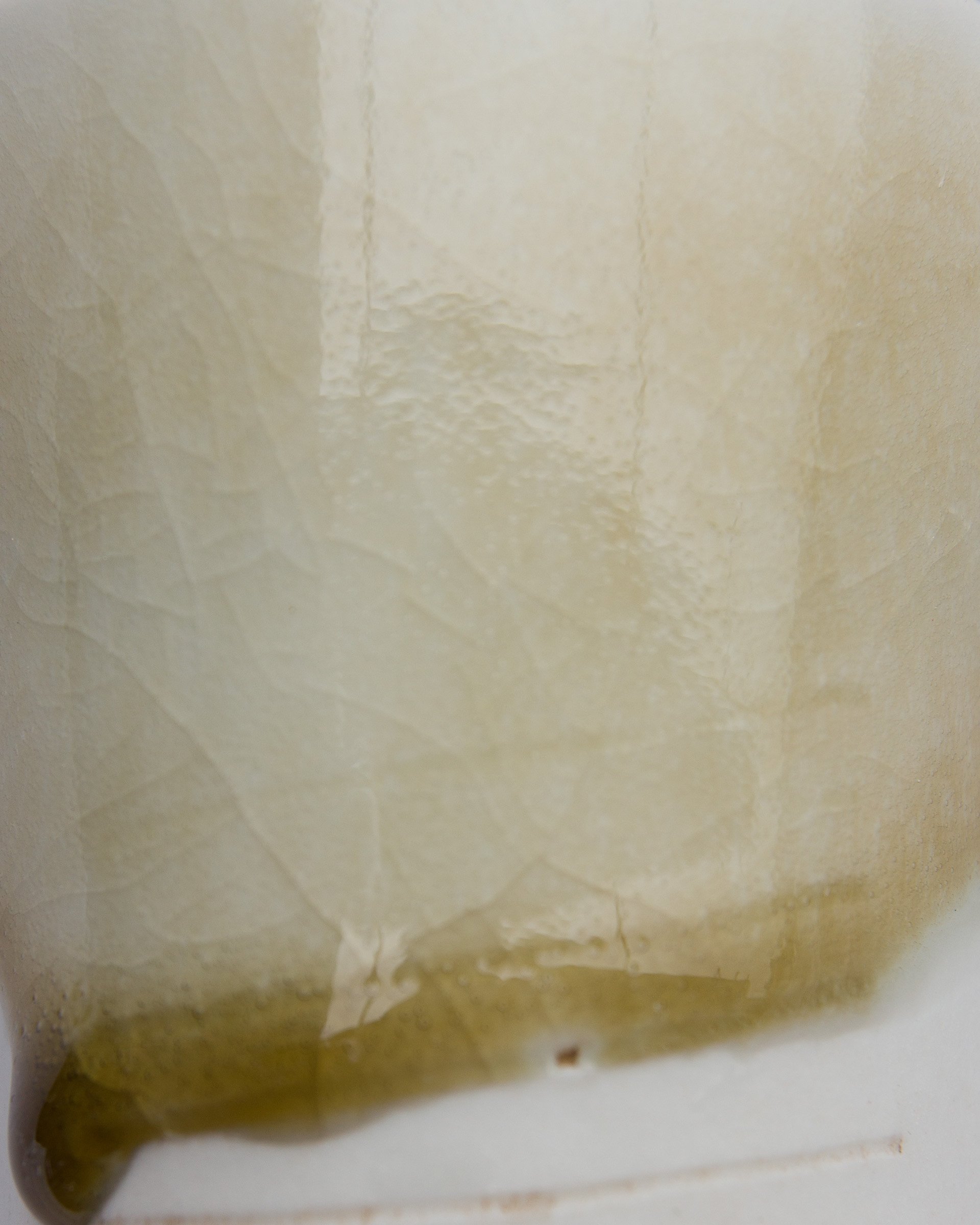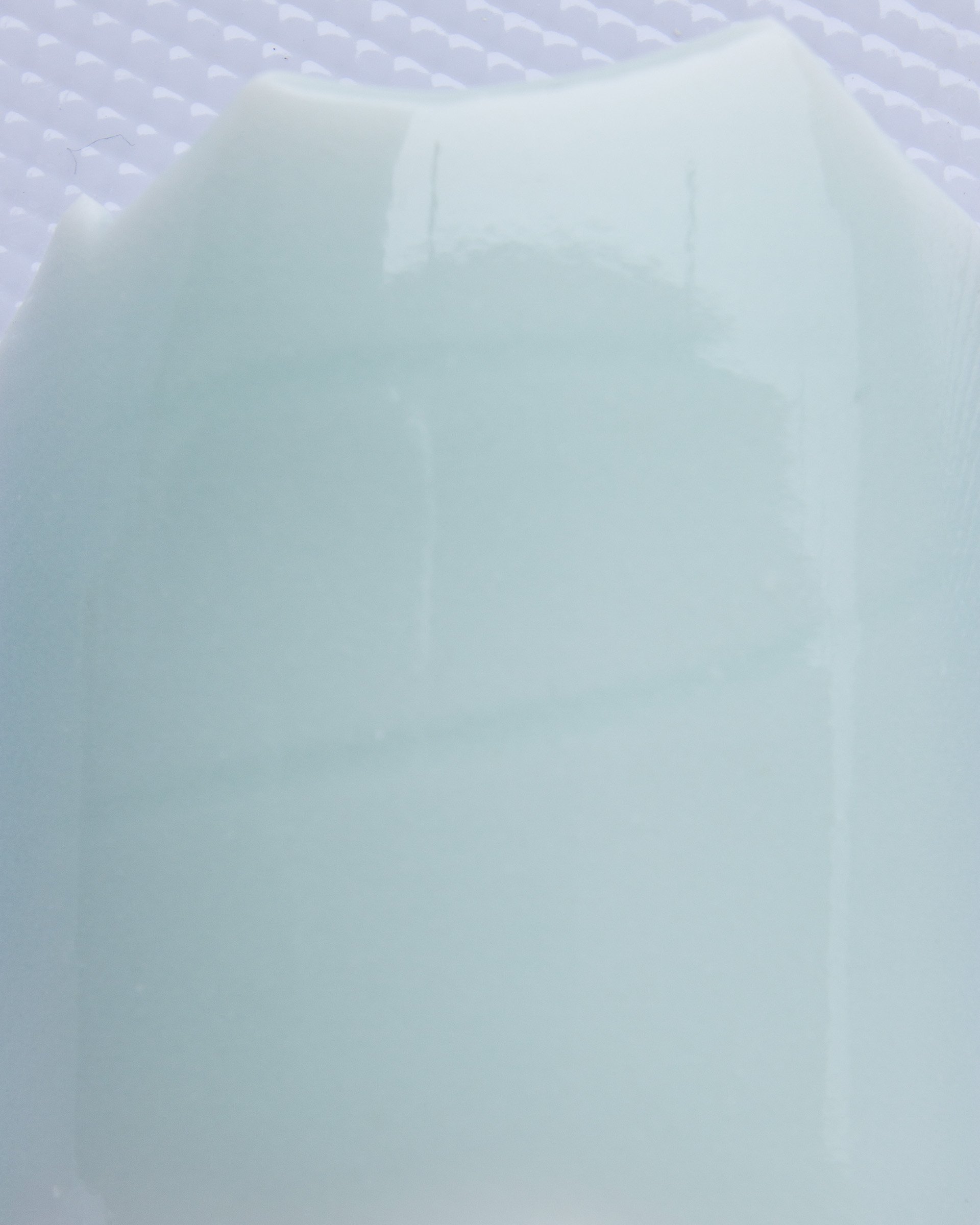Porcelain Stone Glazes
Jingdezhen Porcelain Stone
There are a number of types of porcelain stone mined throughout Jingdezhen and the surrounding countryside. Some are more suitable for making porcelain clay, while others are traditionally used for glazes. It is difficult to know how similar modern-day porcelain stone is to traditional materials. During the few years I have lived in Jingdezhen, some mines have been closed off to private mining, while others have simply run out of material. Those still operating often mix poor-quality material with good material in order to increase production. And plaster is added in ever increasing amounts in order to make the porcelain stone bricks less likely to break in transit.
Below are three types of porcelain stone fired to 1310 Celsius in a reduction atmosphere. From left to right: San Bao porcelain stone, Yaoli glaze stone #1, Yaoli glaze stone #2.
San Bao Porcelain Stone
Yaoli Glaze Stone #1
Yaoli Glaze Stone #2
Most porcelain stone is made from a combination of rocks. The stones below are used to make Yaoli glaze stone. On the left is the more common, dirtier stone, in the middle is the higher quality stone, while the right is the mixed, washed and purified stone before adding plaster. All examples were fired to 1310 Celsius in reduction atmosphere.
More common, dirtier stone
Higher quality stone
Mixed, washed and purified stone
San Bao Porcelain Stone (三宝瓷石)
Below are some simple tests of porcelain stone from San Bao Village (三宝瓷石). This stone is often used for making traditional porcelain clay, but it can also be used for glazes. (However, usually “glaze stone”, or 釉果, is used for glazes.)
The only chemical analysis I have found for San Bao Porcelain Stone comes from 陶瓷艺术釉工艺学 published by 江西高校出版社:
SiO2: 7.013, Al2O3: 17.64, Fe2O3: 0.69, CaO: 0.54, MgO: 0.09, K20: 4.02, Na2O: 4.68. LOI 2.01
(The SiO2 amount is most likely a typo, they probably intended to write 70.13.)
However, this analysis can only be used as a basic guideline. There are noticeable differences between the porcelain stone produced by various families in San Bao, and quality seems to change every year.
Traditional glaze recipes usually call for whiting, but unless fired very carefully, porcelain stone has a tendency to carbon-trap when whiting is the flux. Replacing whiting with wollastonite eliminates this problem.
90% Porcelain Stone, 10% Whiting
80% Porcelain Stone, 20% Whiting
75% Porcelain Stone, 25% Wollastonite
Below are a few glazes containing San Bao porcelain stone, silica, wollastonite and kaolin. It is quite easy to make a very nice celadon with porcelain stone.
60% Porcelain Stone, 20% Silica, 20% Wollastonite
70% Porcelain Stone, 15% Silica, 15% Wollastonite
70% Porcelain Stone, 5% Silica, 15% Wollastonite, 10% Kaolin
70% Porcelain Stone, 10% Silica, 15% Wollastonite, 5% Kaolin
50% Porcelain Stone, 15% Silica, 20% Wollastonite, 15% Kaolin
50% Porcelain Stone, 20% Silica, 20% Wollastonite, 10% Kaolin
Yaoli Glaze Stone (瑶里釉果)
Yaoli Glaze Stone (瑶里釉果) is traditionally used for creating glazes. As with San Bao porcelain stone, there are a number of families mining, cleaning, and creating the glaze stone bricks sold in Jingdezhen.
陶瓷艺术釉工艺学 has the following analysis:
SiO2: 73.99, Al2O3: 15.55, Fe2O3: 0.37, CaO: 1.76, MgO: 0.33, K20: 2.88, Na2O: 2.63. LOI 2.88
But again, the material varies from seller to seller and from year to year.
At the left is a simple melt test of 75% glaze stone with 25% Wollastonite and 80% glaze stone with 20% Wollastonite. The 20% Wollastonite version is already a perfectly useable celadon.
Below are a few simple celadons made with glaze stone, silica, wollastonite, and kaolin.
75% Glaze Stone, 25% Wollastonite
80% Glaze Stone, 20% Wollastonite
70% Glaze Stone, 10% Silica, 20% Wollastonite
60% Glaze Stone, 10% Silica, 25% Wollastonite, 5% Kaolin
60% Glaze Stone, 10% Silica, 20% Wollastonite, 10% Kaolin
Porcelain Bodies
80% Porcelain Stone, 20% Kaolin
A test of 80% porcelain stone and 20% kaolin (New Zealand halloysite). This porcelain is particularly white and fairly translucent. It is quite nice to throw but fragile when bone dry. Mixtures of various types of porcelain stone with between 10-40% kaolin produce porcelain bodies suitable for a range of temperatures.




















